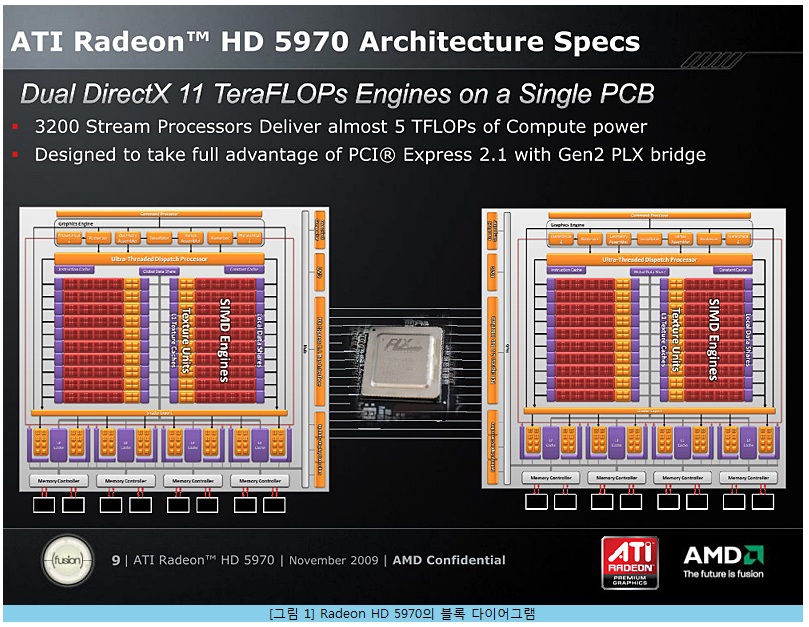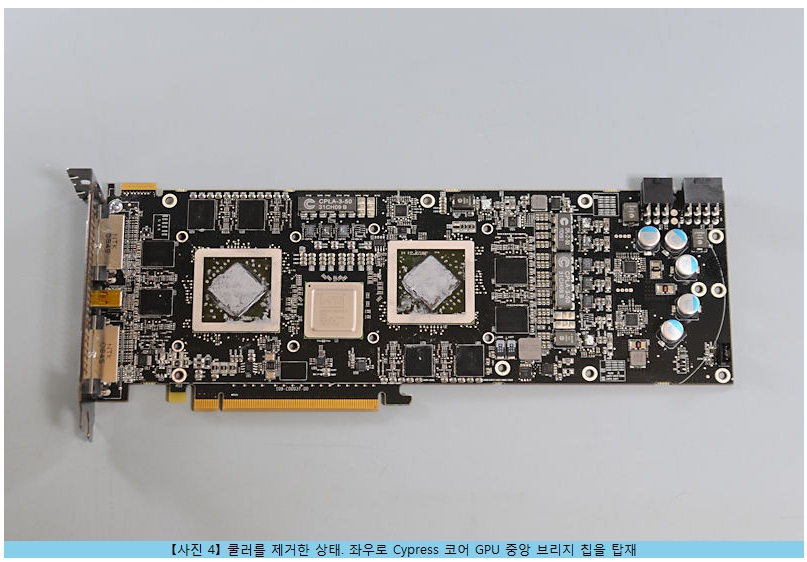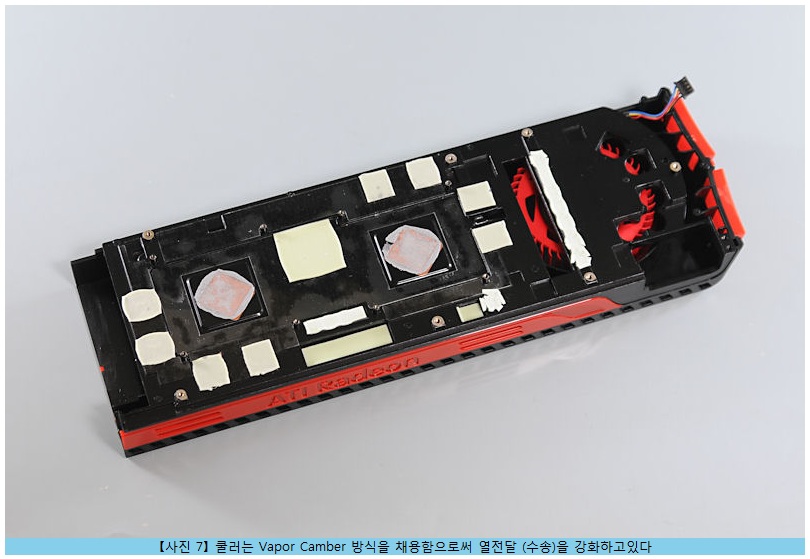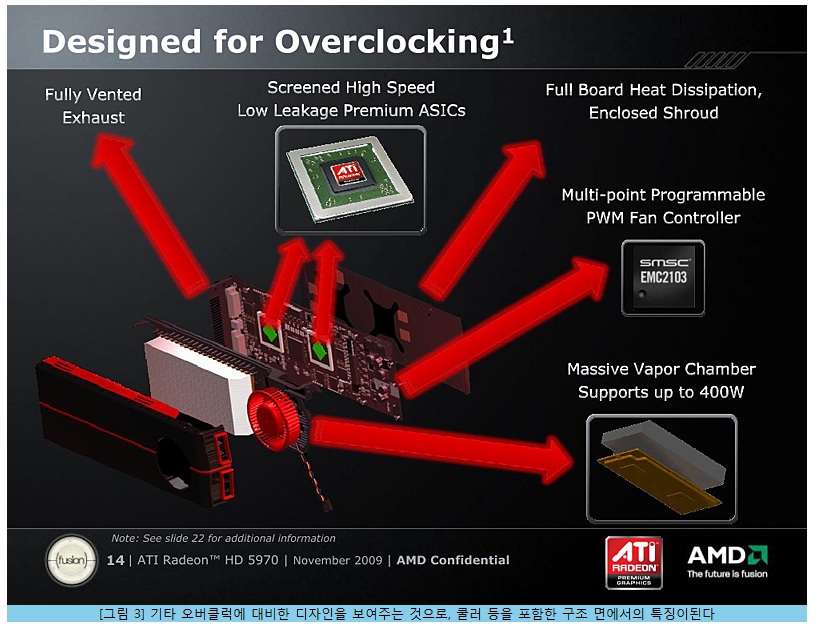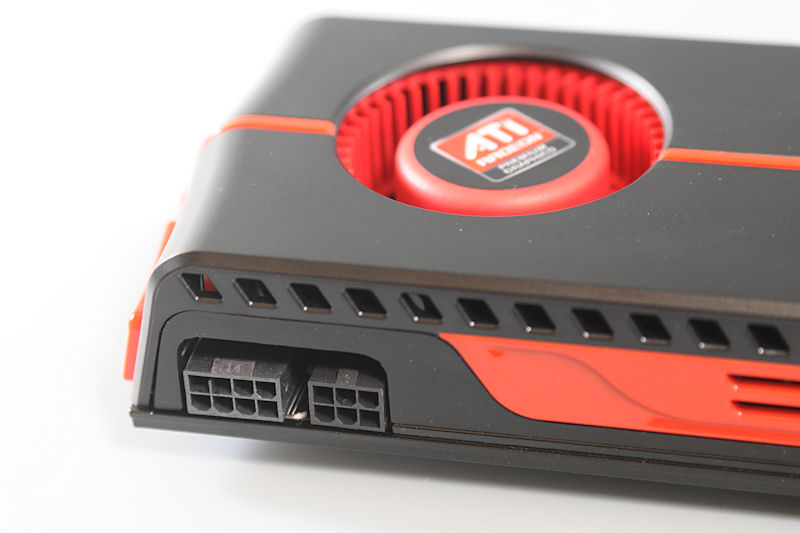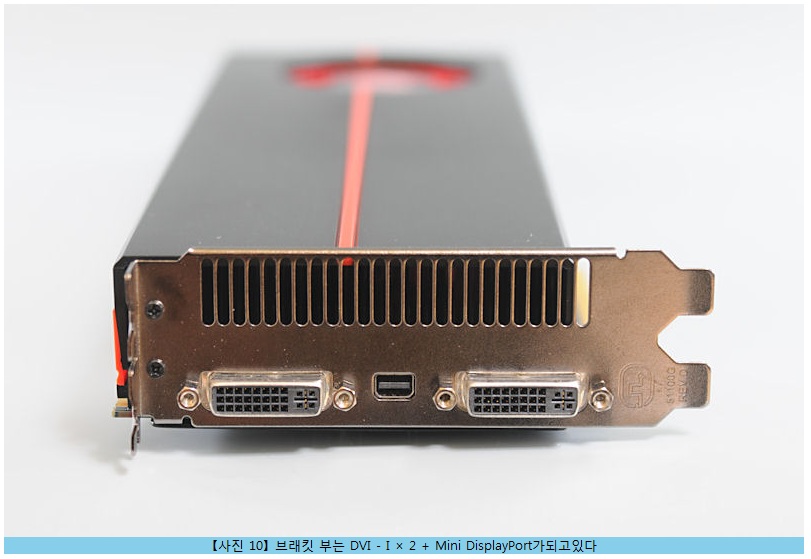AMD is November 18, Radeon HD 5000 series GPU Multi-core video card is "Radeon HD 5970" announced. Radeon check the performance of the new flagship product.
● Equipped with two full-spec based on the Cypress, the clock specification 5850
Hemlock had been predicted by the code name "Radeon HD 5970" is, Radeon HD 5000 series architecture based on multi-GPU is the video card. Radeon HD 3000/4000 generation, product name at the end of "X2" multi-GPU and it was put to clarify that the video card, this generation has shown that the Radeon HD 5800 series lineup top The model name is adopted.
AMD will use here is borrowed from the reference board, the board length is very long (photo 1,2). AMD multi-GPU on one PCB video card with two GPU put the style (Photo 3) and sticking to the board tend to be really long.
[Photo 1] Radeon HD 5970 reference board
[Photo 2] long board is about to end, including the design of 310mm. Radeon HD 5870 more than 3cm long and is
[Photo 3] The back of the reference board. GPU single PCB to the two shows that are listed
The main specifications are as shown in Table 1. Once a brief, 20 SIMD units have enabled all of the Radeon HD 5870 for full-spec engine, the same group with two core Cypress, the clock will be called Radeon HD 5850 running at an equivalent product. AMD demonstrated its architecture in Figure 1 is a description of materials. PLX Techology Cypress Core 2 based chip will be connected by a bridge style. This is like the Radeon HD 4870 X2/3870 X2.
Table 1 Radeon HD 5970 Specifications
| Radeon HD 5970 | Radeon HD 5870 | Radeon HD 5850 |
| Process rules | 40nm
|
| Core clock | 725MHz | 850MHz | 725MHz |
| SP Number | 1,600 units × 2 | 1,600 units | 1,440 units |
| Texture Units | 80 units × 2 | 80 units | 72 units |
| Memory | 1GB × 2 GDDR5 | 1GB GDDR5
|
| Overclocking | 1,000 MHz | 1,200 MHz | 1,000 MHz |
| Memory Interface | 256bit × 2 | 256bi t
|
| ROP Units | 32 units × 2 | 32 units
|
| Power Board (idle) | 42W | 27W
|
| Power Board (peak) | 294W | 188W | 151W
|
[Figure 1] Block diagram of the Radeon HD 5970
Incidentally, the reference board try to remove the cooler, GPU, and each of the two units can be sure that 1GB of GDDR5 memory and being (Photos 4-7). H5GQ1H24AFR-T2C on Hynix's memory, 5.0Gbps memory chip that supports up. 4.0Gbps say that there is enough for chips.
[Photo 4] after removing the air conditioner. Cypress both sides of the core GPU, the central bridge chips
[Photo 5] each GPU connected to the memory of 8 total. Each per GPU, the surface of four sheets, the back four sheets to implement
[Photo 6] The video memory is Hynix H5GQ1H24AFR-T2C. 1Gbit chips each GPU to eight pieces each, and a total of 2GB
[Photo 7] Vapor Camber cooler is that adopted the thermal conductivity (transport) which increases
And have adopted such a memory, Radeon HD 5970 is a point that is also appealing design that is over with the clock (Figure 2-3). Power consumption, but later, 300W while running clock set to exceed the current frame that leaves room for the tune score, suggesting that the idea.
[Figure 2] Radeon HD 5970 is designed to appeal to the board with overclocking
[Figure 3] which also shows the design with the clock over here, in terms of features and structures, including a cooler
Bridge chip, ATI logo and "AMD8647-BBB50BC" was stamped the model number (photo 8). However, as was also the first document, the entity would PLX Technology products. AMD8647 and from the model show that, Radeon HD 4870 X2 like 48-lane PCI Express 2.0 bridge chip PEX8647 is believed to have been used.
294W peak power is in the way of the board, power supply terminal is equipped with 6-pin and 8-pin (Photo 9). PCI Express slots, +8 pin 6 can be supplied in-line configuration on the edge, and 300W power supply pin, the clock speed of the Radeon HD 5850 that is considerable and seems to be greater for this reason. The PEX8647 bridge chip, the product literature, 2.8W typical power consumption has been marked, Radeon HD 5970 from my total, and large enough to affect the power is not major.
Bracket of the Mini DisplayPort and DVI × 2 configuration is (photo 10). Eyefinity Radeon HD 5000 series features characteristic of these three can be used simultaneously to one output, Mini DipslayPort the availability of good points from the DisplayPort adapter to convert it disturbing. Most, Mini DisplayPort also finally standardized as the VESA standard so extended, the potential for improved high availability of these adapters.
[8] with two photos and GPU connection, PC with PCI Express bridge chip provides the interface "AMD8647-BBB50BC" use. PLX Technology is a chip made
[Photo 9] 6-pin power supply terminal pin configuration +8
[10] pictures of the bracket DVI-I × 2 + Mini DisplayPort is and
In addition, Native CrossFire and pins, this product can be used two pieces Quad CrossFire (Photo 11). Rated as the clock is running when the idle core by ATI PowerPlay 157MHz, Memory 300MHz to ensure that the clock is down to (screen 1)




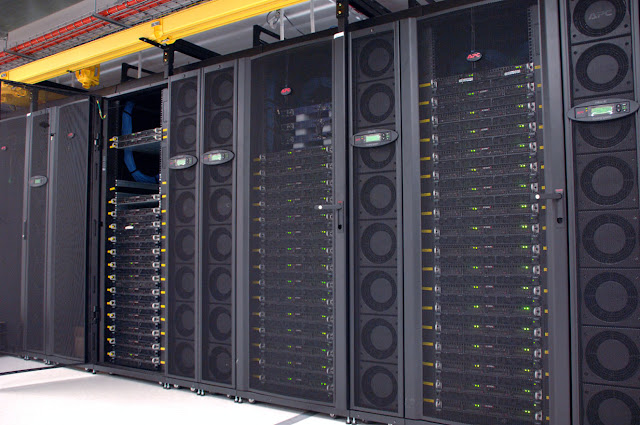.jpg)







.jpg)



















